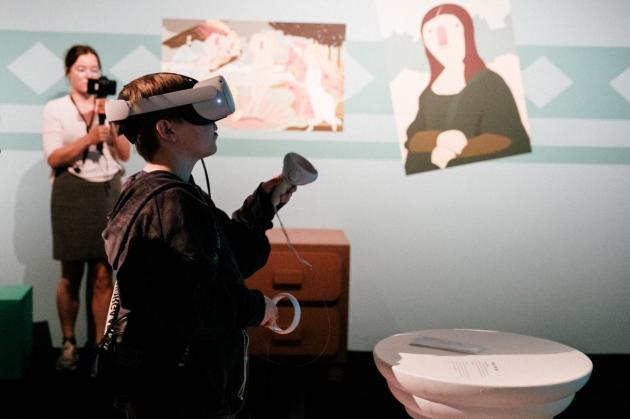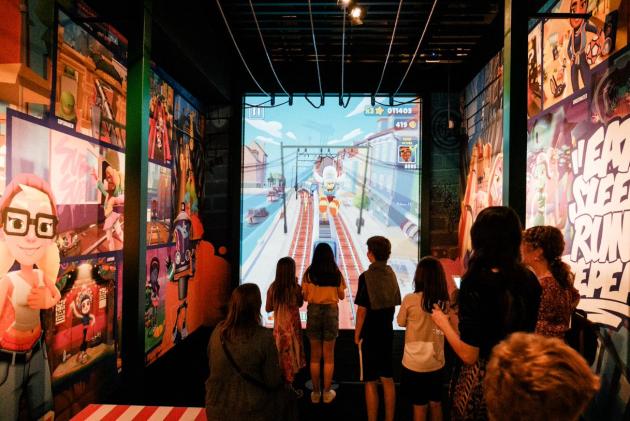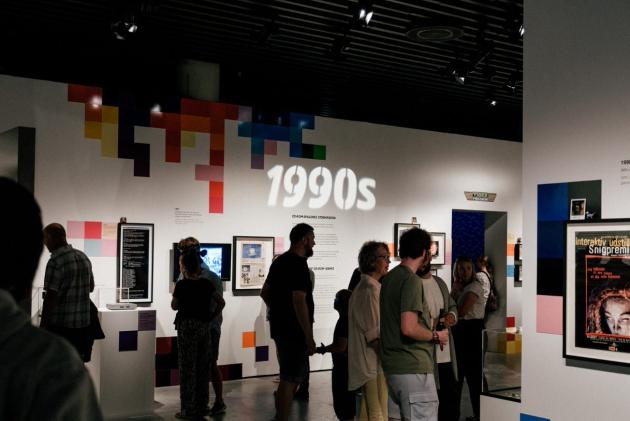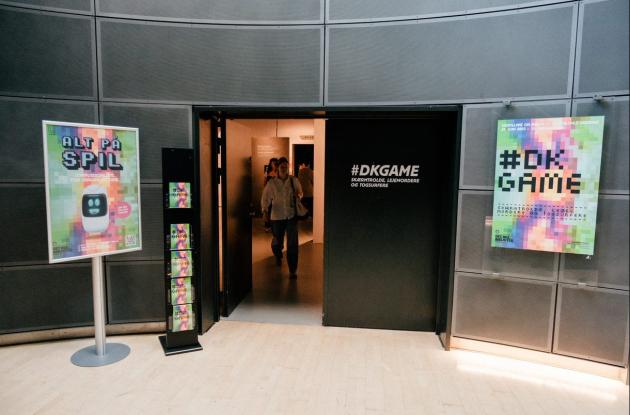#DKgame – an exhibition is created
#DKgame, the new exhibition in The Black Diamond, presents the unusual range of Danish computer games. And it takes up space.
It requires space, the exhibition on Danish computer games, which from June 2023 will occupy most of The Black Diamond's lower floor. It is large in scale because it is the first time that Royal Danish Library depicts the history of the computer game, based on the collection that Danish game developers submit to when they make a new one. But also to show games as a multifaceted cultural product.
We think it is time the computer game is invited to join the high circles.
One of the reasons why this form of expression has not been a traditional fixture in museums is precisely its ambiguity, she believes. Everyone who works seriously with computer games works seriously with an aesthetic. But it is not just an art form that we must learn to recognise, just as we did with photography and video. It is also entertainment and e-sports and a billion-dollar industry. The exhibition tries to gather the various parts of the story.

Photo: Malthe Ivarsson
One way to attend the exhibition is to follow the development history of the computer game. Another is to play your way through five games, including Tiger Mission, the early hit for the Commodore 64, and What The Bat?, one of the latest VR games, that replaces the player's hands with baseball bats.
We want to make room for people to try the games across generations and talk about what they can do. Is meeting online in a game a real friendship? When is screen time part of learning? With the exhibition, we want to open up these discussions among our guests,
says Christina Back.
The game never ends
The 1960s is the starting decade, from which very few games are exhibited - the supply was small then - but it quickly took off. The 1970s saw sports games reserved for the few, but more people gained access to a computer and a growing selection of action games in the 1980s. They were an extension of the games in arcades and sometimes promised more than they delivered, says Jakob Moesgaard, who is responsible for the game collection at Royal Danish Library.
The packaging of the games showed fully unfolded universes with space guns or helicopters, and it was really a staging of the simple pixels that met the audience on the screen.
With the 1990s came greater technical possibilities as games began to be released on CD for people's multimedia PCs that had better graphics and sound. Games like Cirkeline and Magnus og Myggen continued the tradition of serious children's culture known from DR, but otherwise games went in completely new and unique directions. In the following decades, the Internet and mobile platforms provided more channels to reach users. One of the offshoots was successes that extended beyond Denmark. The exhibition delves into the Danish-produced game Hitman about the assassin Agent 47, who became such a big celebrity that he got his own Hollywood movies, and Subway Surfers, downloaded four billion times and one of the most popular mobile games ever. The latter encapsulates how the game format is constantly changing.

Photo: Malthe Ivarsson
Subway Surfers
is continuously updated with new courses, and this illustrates one of the challenges we face in today's digital games. We can have a version in our collection, but we cannot claim that it is the final one, because the game will never be finished,
says Jakob Moesgaard.
The computer game collection
#Dkgame takes its starting point in Royal Danish Library's computer game collection. It all began in 1998, when computer games and other interactive works
were introduced into the Legal Deposit Act. That is, the legislation that states which media must be handed over to Royal Danish Library. In 2005 the legislation was revised to also include material published online. With this, the basis for the current computer game collection was created.

Photo: Malthe Ivarsson
The earliest parts of the collection consist exclusively of games on physical media, while the newer parts mainly consist of the many Danish games published online for computers, smartphones and tablets. The development in both production and distribution systems results in the amount of Danish computer games increasing steadily year by year.
The collection is not complete, but contains games of every kind and genre. We do not pay attention to the individual game's quality, sales figures or the like when we collect and preserve them. The wish is to provide as complete an overview as possible of today's digital culture.
In #DKgame we highlight some of the most exciting stories in the collection. You can visit the exhibition in The Black Diamond in Copenhagen from 23 June 2023 to 13 January 2024.
